Mesolite spikes on orange thomsonite balls from India, myth or reality?
- Details
- Created: Wednesday, 17 July 2024 10:58
In june 2024, visiting the Sainte Marie aux Mines Mineral Show, I came accross several pieces of aesthetic minerals showing tiny, long or short colorless needles standing on an orange ball, like an urchin! Such material is quite recent, appeared not more than 2 or 3 years ago. The mineral specimens are sold as thomsonite, a mineral from zeolite group, often found like orange balls in indian minerals. I got two samples from Philippe Lutz - Beaux Minéraux du Monde - for study, one with a complete orange ball on its matrix (Figure 1) and another one with a split ball (Figure 2), that should make analysis easier without destroying the sample. These two specimens do not show long needles as seen on some other astonishing pieces but they are really there, and the split ball clearly shows radiating acicular crystals forming the orange ball as seen from outside, but internally they are almost grayish white or colorless. Another major mineral is present on the matrix with large yellowish or grayish colorless clusters of small crystals.
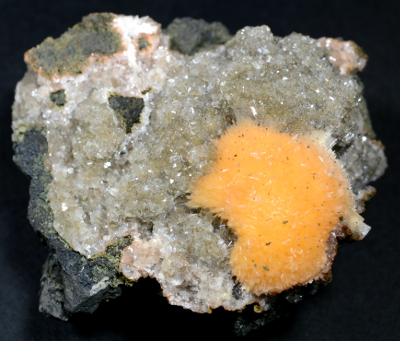 Figure 1. The specimen measures 50 x 40 mm and the orange ball
Figure 1. The specimen measures 50 x 40 mm and the orange ballis about 25 x 20 mm.
In the market, the available specimens are reported to be originated from two locations, Deshgaon in Khandwa District and Burhanpur District, both are neighbouring states located in the western part of Madhya Pradesh, India. Deshgaon ones are said to be found during road works near the Deshgaon city.
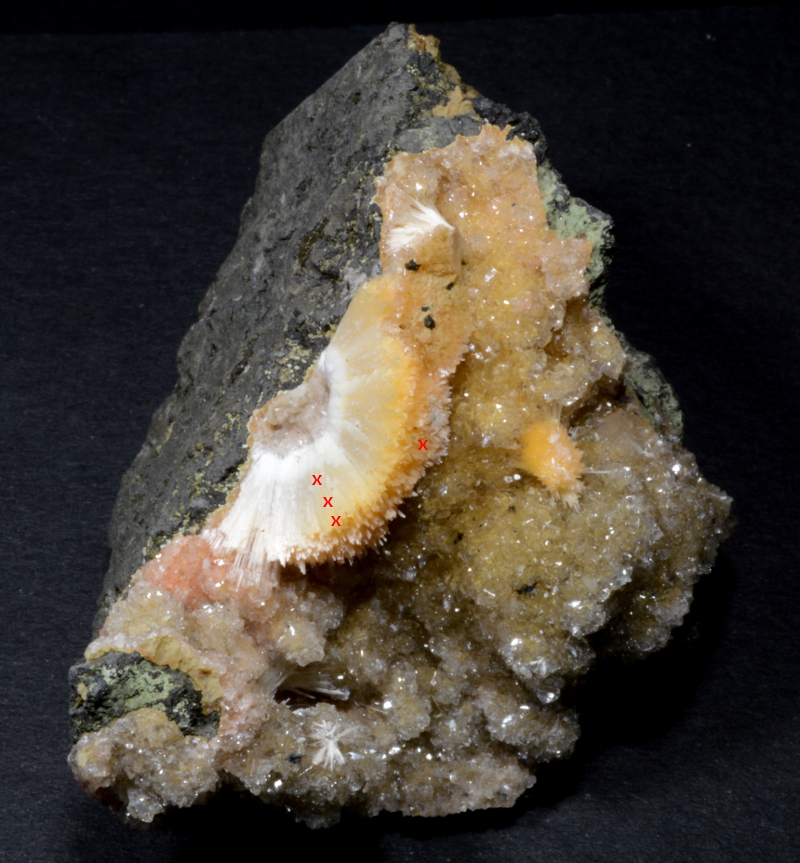
Figure 2. The second specimen (40 x 70 mm) shows its split orange ball that exhibits radiating acicular crystals. The matrix is covered by
clusters of small grayish to colorless crystals. The yellowish color seems to come from underlying material. The red crosses indicate the
collection spots of the Raman spectra.
Raman spectroscopy:
Raman sectra were collected from the two samples, especially from the outer layer of the balls and from the inner layers of the split ball thanks to the fracture that shows the side of the radiating needles crystals. All spectra yielded almost identicals patterns, a demonstrative one is shown in Figure 3. Whatever the collecting spot is, all spectra match the mesolite spectrum with Raman bands at 423, 447, 532, (671), (713), (758), 1045, 1080, 1300 and 1446 cm-1. The mesolite is another zeolite mineral belonging to the scolecite - natrolite series as an intermediate member. Raman spectra of thomsonite-Ca (NaCa2[Al5Si5O20]·6H2O), mesolite (Na2Ca2Si9Al6O30·8H2O), scolecite (CaAl2Si3O10·3H2O) and natrolite (Na2Al2Si3O10·2H2O) are quite similar but nevertheless it is possible to separate them from each others, examples of mesolite and thomsonite Raman spectra are given in Figure 4 for comparison.
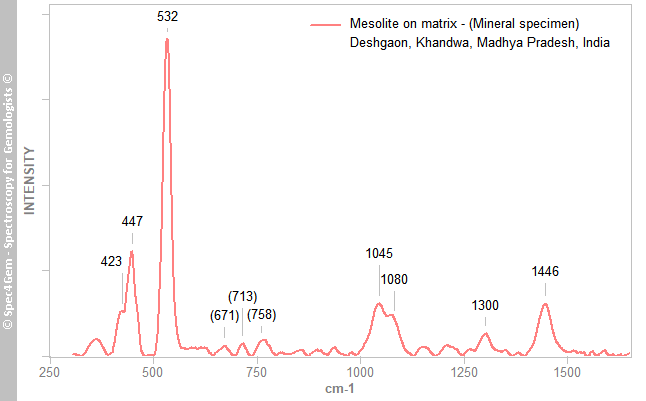 Figure 3. The common Raman spectrum collected from many spots of the orange surface of the balls and from inner spots of the broken ball shows Raman bands at 423, 447, 532, (671), (713), (758), 1045, 1080, 1300 and 1446 cm-1 indicating mesolite.
Figure 3. The common Raman spectrum collected from many spots of the orange surface of the balls and from inner spots of the broken ball shows Raman bands at 423, 447, 532, (671), (713), (758), 1045, 1080, 1300 and 1446 cm-1 indicating mesolite.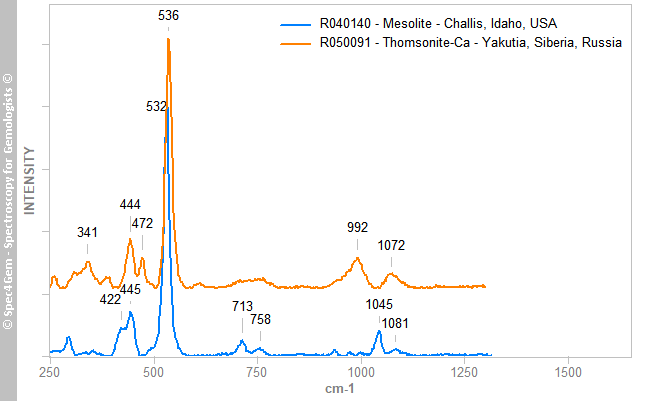 Figure 4. Raman spectra of thomsonite and mesolite from RRUFF database that can be used for reference and compared to the collected spectra of our samples.
Figure 4. Raman spectra of thomsonite and mesolite from RRUFF database that can be used for reference and compared to the collected spectra of our samples.Some spectra were also collected from the grayish to colorless clusters of small crystals lining the matrix. The corresponding spectrum shown in Figure 5 exhibits three main Raman bands at 403, 481 and 609 cm-1 which are indicative of Heulandite-Ca ((Ca,Na)5(Si27Al9)O72·26H2O), yet another zeolite mineral.
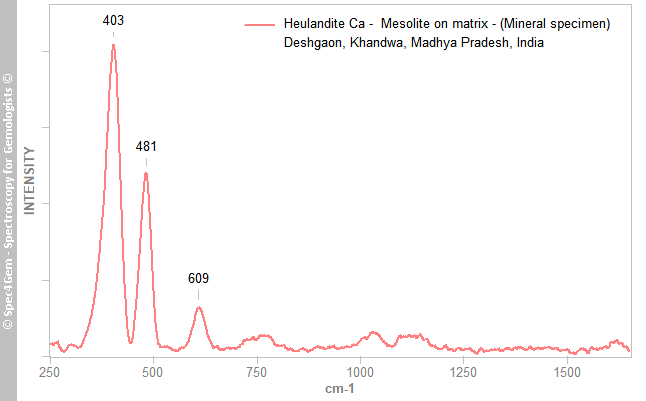 Figure 5. The Raman spectrum collected from the small grayish to colorless cristals lining the matrix show Raman bands at 403, 481 and 609 cm-1 which are indicative of Heulandite-Ca.
Figure 5. The Raman spectrum collected from the small grayish to colorless cristals lining the matrix show Raman bands at 403, 481 and 609 cm-1 which are indicative of Heulandite-Ca.Conclusion:
The two specimens studied in this article have orange balls resulting of radial acicular mesolite crystals, no thomsonite was found at the Raman sampling spots. The matrix is covered by heulandite-Ca crystals. Another analysis by XRD made by Pristine Minerals gave the same result, mesolite is the only mineral in these orange to red balls. Scientifically, doubt is important, it may exist some sample with thomsonite, but right now, none of the studies / analysis have shown it yet.

